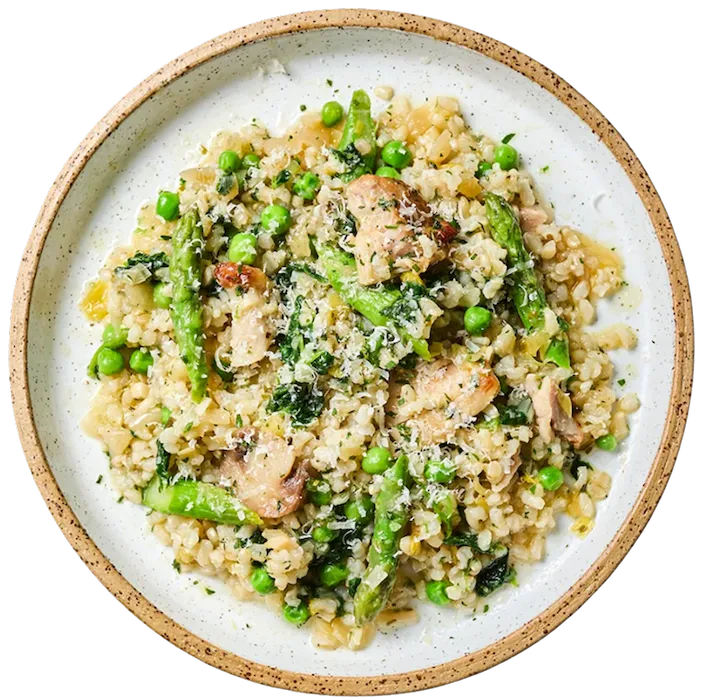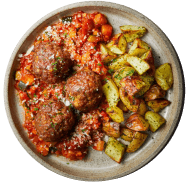Practical Tips to Maintain a Healthy Diet
How Do I Maintain A Healthy Diet?
The hardest part about a healthy diet is keeping it going, which is why we've rounded up some practical tips and small nudges to help keep you on track with your diet.
Meal planning, eating out, reading food labels - we got you covered.
Dietitian Mei explores practical tips on how to make your nutrition nudges easier
Take home messages
- To help make dietary and lifestyle changes easier, plan your meals in advance and write down a list of ingredients needed before you run out.
- With a little bit of planning and knowledge, you can make healthier choices when eating out.
- Take time to read the food labels and ingredients - it can help you maintain a healthy diet and lifestyle and make it easier to identify any potential allergens and intolerances.
Practical tips for planning & shopping
Planning your meals and food shopping can be overwhelming, especially if you’re trying to eat healthy.
But it doesn’t have to be! With a few simple steps, you can make sure you’re eating nutritious meals while sticking to your budget...
Make a list of the meals you’d like to cook during the week. Think about what your simple nutrition nudge is and try to focus on how to integrate this into your meal planning. Perhaps you want to add when you’ll be eating out so you know exactly how many meals to plan for in the week.
So, you’ve got your list of meals, what now? Let’s create a shopping list. Note down all the ingredients you’ll need to make the meals so that you’re not caught out on any missing ingredients during the week. Research shows that when you bring a shopping list with you, you’re less likely to buy things based on impulse.
Another time-saving tip is to batch cook. You can make any meal in large quantities and pop them in freezable-storage containers - so when you want to eat something healthy, you know it’s in the freezer waiting for you. Alternatively, you may want to freeze leftovers (great way to prevent food waste too!)
Practical tips for eating out
Eating out is a great way to socialize and enjoy different cuisines, but it can also be difficult to make healthy choices.
Fortunately, with a little bit of planning and knowledge, it is possible to make healthier choices when eating out...
- Research the restaurant ahead of time. Many restaurants now have their menu online, so you can look up nutritional information. This can help you make an informed decision before you even arrive.
- Many restaurants offer an array of healthier choices such as salads, grilled fish, and lean meats. If you happen to choose fast food, try to make healthier choices. For example, opt for grilled chicken sandwiches or salads instead of burgers and fries. Also think about going for healthier sides or desserts such as fruit-based desserts or a side salad.
- Aim for dishes that are baked, grilled, or steamed instead of fried. Ask for dressings and sauces on the side so you can control how much you use.
- 'Sharing is caring’ - split a started with a friend or family member, which can help you control your portion size.
- Try to avoid sugary drinks and opt for water or unsweetened drinks instead. This will help reduce your overall sugar and calorie intake.
- When it comes to alcohol, think about how often you drink in a week or month and whether going alcohol free or just having a smaller glass of wine may help you feel in more control.
Practical tips for reading food labels
Reading food labels and understanding what the ingredients are in the food we eat is an important part of maintaining a healthy diet.
Understanding what ingredients are in the food we eat can help us to make wise food choices, as well as to identify potential intolerances and allergens.
- Check out the nutrition facts panel - typically located on the back of food packages and outlines the nutritional content of the food. It gives you information about the amount of calories, carbs, protein, fat, salt and other nutrients in the food. This information is useful for determining how the food fits into your overall dietary plan and nutrition nudges.
- The ingredients list is usually located beneath the nutrition facts panel and is broken down into two sections. The first section lists the ingredients by their common names and listed by highest to lowest amounts. The second section lists any foods that contain ingredients that trigger allergies such as wheat, milk, eggs, gluten, fish, shellfish, peanuts, tree nuts, and soy. This information is crucial for people with food allergies and intolerances, as it can help them to identify foods that may trigger their condition.
- Be aware of added sugars, artificial colours and preservatives. These are usually listed in the form of chemical names, so it is helpful to be familiar with the names of common additives.
Final thoughts
Planning your meals in advance and making sure your cupboards are stocked up with wholesome goodness is a great way to not only feel more in control of your diet, but it helps you put youself on the ''To-Do'' list amongst all the other tasks!
Eating out no longer needs to jeapodise or set you back from what you what to change with your health - again, it comes to being prepared and looking at menus in advance if possible.
Getting savvy with reading food labels can really help you understand better what you're putting into your body - so take your time to read the ingredients in-store or online.
Here's a bonus practical tip for you, print off this blog and use it as a resource sheet and tick things off when you've achieved them :)
related content
more content: Weight Loss
browse our ranges.
choose from one of our ranges or personalise your own menu from 60+ meals.
- low FODMAP

- eat well, live well programme

- gluten free

- high protein

- weight management

- ibs

- lowest calorie

- lower carbs

- mediterranean

- smaller range

- pcos

- lean + lighter

- menopause

- heart healthy

- full menu

- gift cards